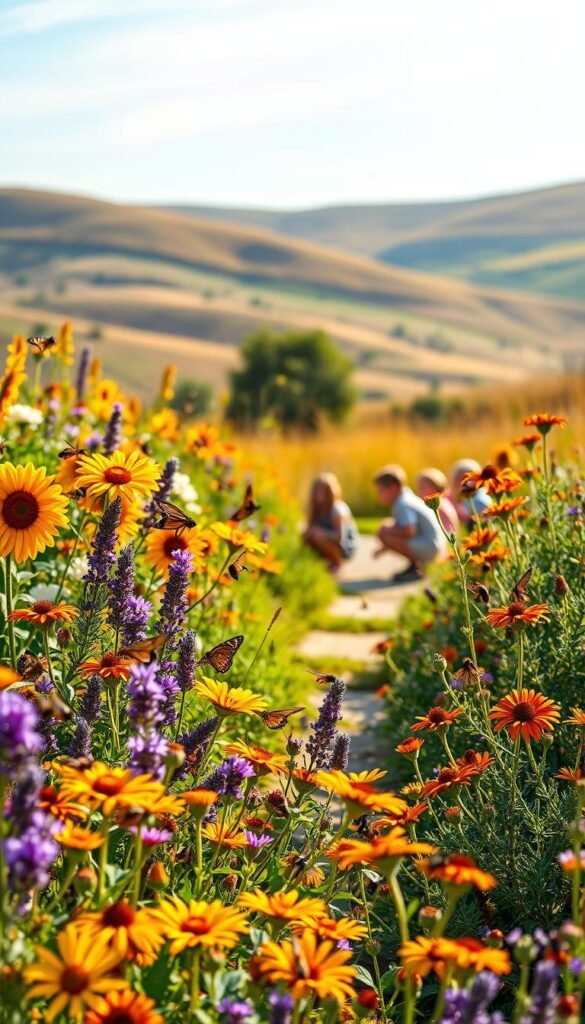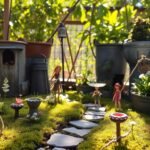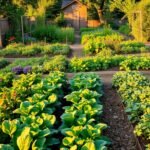Your backyard—or even a sunny windowsill—can become a thriving sanctuary for pollinators. These tiny heroes, like bees, butterflies, and ladybugs, play a vital role in our food supply. Did you know they help grow over 1,200 types of fruits and vegetables? With a few pollinator-friendly garden basics, you and your child can turn any space into a buzzing classroom.
No need for acres of land. A small container garden works wonders. Choose bright flowers like milkweed or lavender to attract winged visitors. As kids water plants or watch caterpillars munch leaves, they’ll learn responsibility and ecology firsthand. Studies show gardening improves motor skills and sparks curiosity about nature’s cycles.
Why does this matter? Many insects face habitat loss, but your family can help. Even leaving a patch of clover in the lawn provides pollen nectar for hungry bees. Avoid pesticides, add a shallow water dish, and watch life flourish. It’s not just about saving bugs—it’s about growing memories while nourishing our planet.
Getting Started with Your Pollinator Haven
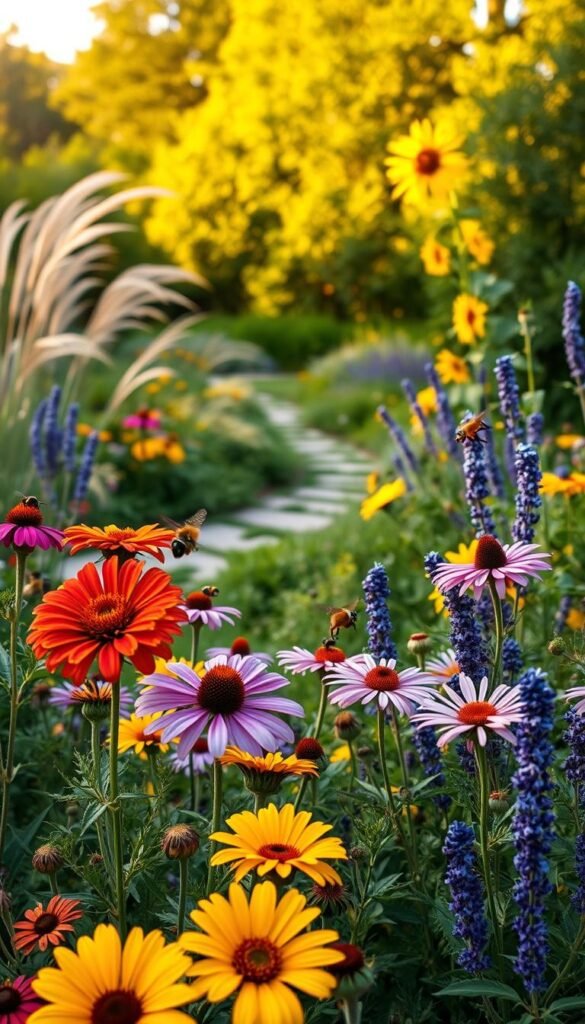
Transform your outdoor space into a lively hub for essential pollinators by ditching perfection. A slightly wild garden teeming with clover, dandelions, and native flowers does more good than a pristine lawn. Let’s explore how to balance beauty with ecological purpose.
Embracing a Natural Garden Aesthetic
Weeds aren’t enemies—they’re food sources for bees and butterflies. Goldenrod feeds monarchs during migration, while milkweed supports caterpillars. Replace fear of untamed growth with curiosity about nature’s design.
| Manicured Garden | Natural Habitat | Pollinator Benefits |
|---|---|---|
| Short, uniform grass | Mixed-height plants | Shelter for insects |
| Weekly mowing | Seasonal growth cycles | Continuous nectar supply |
| Chemical treatments | Organic debris | Safe nesting grounds |
Engaging Your Child in the Gardening Journey
Hand kids a trowel and let them plant marigolds or sunflowers. These hardy plants grow quickly, keeping young minds invested. Create a “bee bath” together using a shallow dish with pebbles and water—it becomes a science lesson disguised as play.
One Ohio family turned their yard into a monarch waystation by adding native perennials. Their 7-year-old now tracks butterfly sightings like a pro. Start small: even a 3×3-foot bed can host 15+ pollinator species!
Planning and Designing Your Pollinator Garden
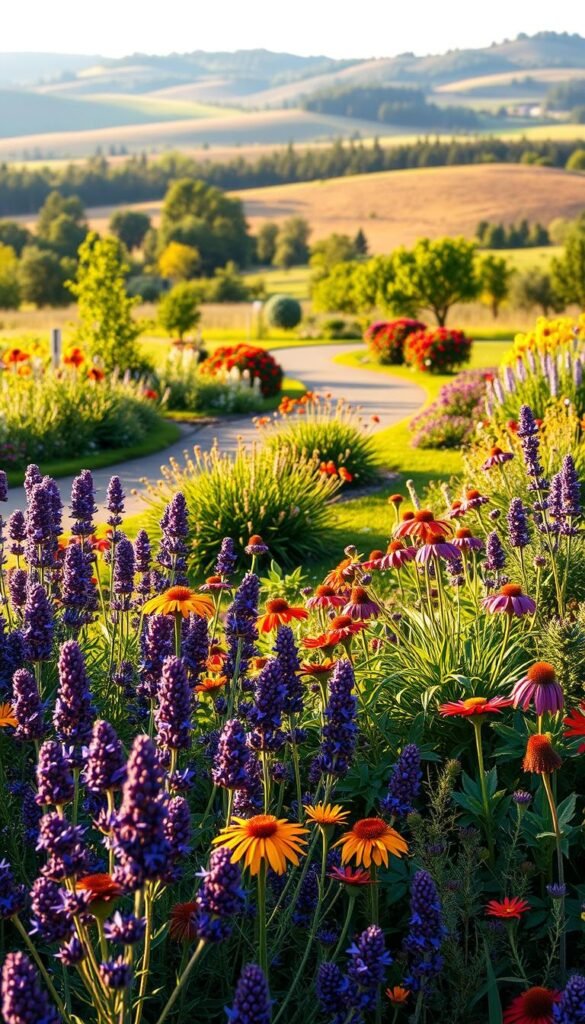
Designing a buzzing ecosystem starts with understanding your land’s potential. A thriving pollinator garden isn’t just about pretty flowers—it’s about creating layered habitats. Check soil quality with a simple pH test kit or consult regional planting guides to match native plants to your ground conditions.
Assessing Your Space and Soil Conditions
Start by observing sunlight patterns. Most pollinator-friendly plants need 6+ hours of direct sun. Test drainage by digging a 12-inch hole—if water pools after rain, add compost to improve texture. Sandy soils? Mix in organic matter to retain moisture for thirsty bees.
Mapping Out Flower Beds and Shelter Areas
Cluster flowers in groups of 3-5 to help pollinators spot them easily. Leave bare patches of soil for ground-nesting insects, and stack fallen branches for beetle hideouts. Plan staggered bloom times so something’s always flowering from spring to fall.
| Structured Beds | Wildflower Patches | Insect Benefits |
|---|---|---|
| Neat rows of zinnias | Mixed native species | Diverse nectar sources |
| Mulched pathways | Self-seeding plants | Natural reproduction |
| Seasonal replanting | Year-round growth | Continuous shelter |
Incorporating Container and Lawn Alternatives
No yard? No problem. Herbs like thyme in window boxes feed bees, while dwarf sunflowers thrive in pots. Replace grass with clover—it stays green with minimal water and provides pollen. Try a “container ladder” with varying heights to mimic natural landscapes.
Creating a Pollinator Haven: Butterflies, Bees, and Ladybugs for Children
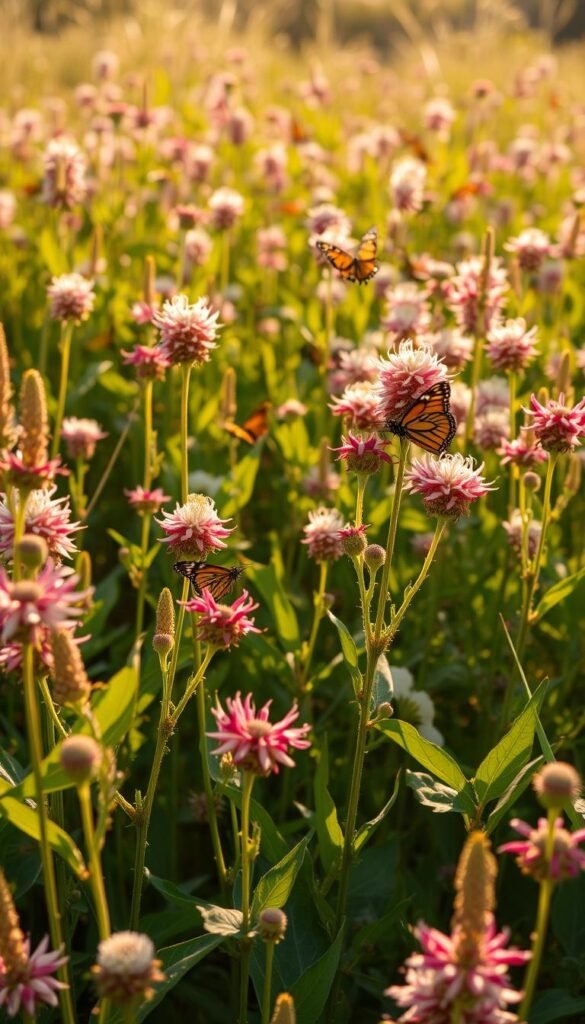
Every blooming garden thrives on partnerships between plants and their six-legged allies. Host species like milkweed act as nurseries, while nectar-rich flowers serve as fueling stations. Together, they sustain pollinators through every life stage.
Nature’s Baby Rooms and Buffets
Host plants are where butterflies lay eggs and caterpillars feast. Monarchs only eat milkweed leaves—their toxic defense against predators. Nectar flowers like coneflowers and phlox feed adult insects, giving energy for reproduction.
| Host Plants | Nectar Providers | Wildlife Supported |
|---|---|---|
| Milkweed | Coneflowers | Monarch butterflies |
| Parsley | Goldenrod | Swallowtail larvae |
| Oak trees | Bee balm | 500+ moth species |
Recruiting Six-Legged Garden Guards
Ladybugs devour aphids, while praying mantises hunt destructive pests. These natural predators thrive when you avoid pesticides. A Michigan schoolyard saw 60% fewer plant-munching bugs after releasing 1,500 ladybugs—no sprays needed!
Combine native plants with eco-friendly pest control strategies for best results. Leave some leaf litter for beetle habitats, and watch your pollinator garden balance itself. Even small spaces can host this delicate dance between insects and their food sources.
Selecting and Planting Pollinator-Friendly Flowers
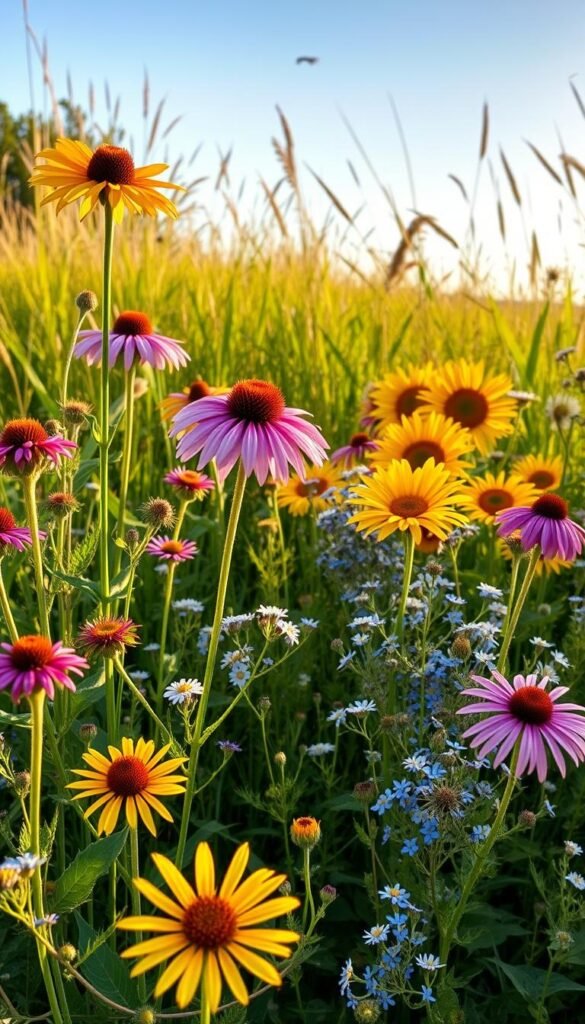
Your local nursery holds the key to nature’s VIP lounge. By picking the right plants, you’ll roll out a red carpet for bees, butterflies, and other essential pollinators. Start with your zip code—native species thrive best because they’re adapted to your soil and climate.
Choosing Native Plants and Seasonal Blooms
Regional stars like purple coneflower and goldenrod offer food and shelter year-round. Check the Xerces Society’s regional guides for top performers in your area. Aim for three seasons of blooms:
- Spring: Wild lupine (bumblebee favorite)
- Summer: Bee balm (hummingbird magnet)
- Fall: New England aster (monarch fuel)
Tips on Planting Milkweed, Zinnias, and Coneflowers
These powerhouse flowers support pollinators at every stage. Here’s how to plant them right:
- Milkweed: Scatter seeds in fall or plant seedlings 18″ apart. Monarch caterpillars need 10+ plants to thrive.
- Zinnias: Sow directly in sunny spots after frost. Their flat blooms make perfect bee landing pads.
- Coneflowers: Space 12–24″ in well-drained soil. Their spiky centers feed goldfinches in winter.
Cluster same-species plants in groups of five—pollinators spot large color blocks easier. Mix heights too: tall sunflowers behind mid-size coneflowers create wind protection. Your garden becomes a living buffet that’s both pretty and purposeful!
Maintaining a Year-Round Habitat for Pollinators
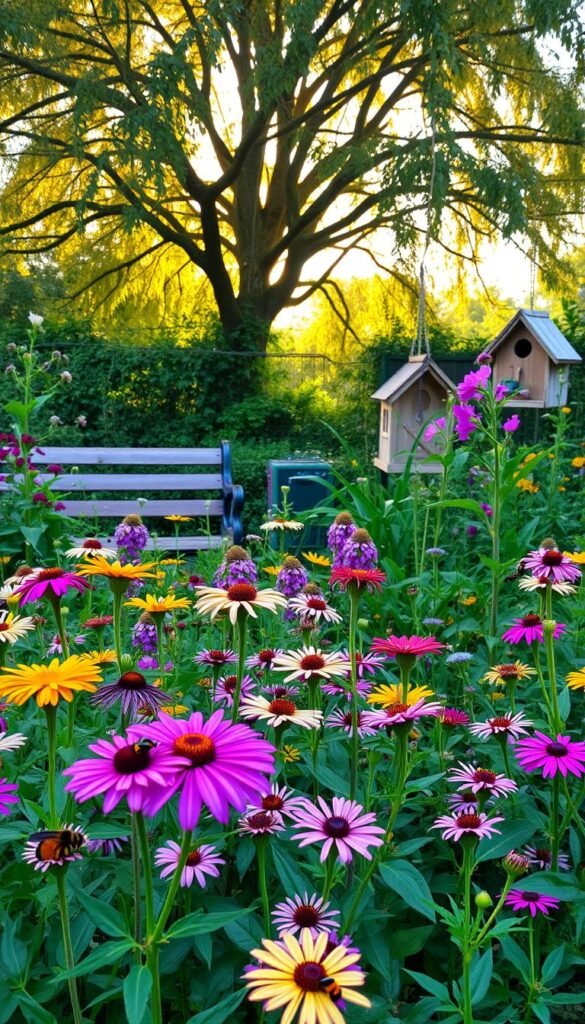
A thriving pollinator garden needs care that evolves with the seasons. Smart maintenance keeps flowers healthy and ensures insects have steady food and shelter. Let’s break down simple routines to protect your winged and six-legged guests through sun, rain, and snow.
Watering, Weeding, and Managing Pesticide Use
Water deeply but less often to encourage strong roots. Early morning is best—it reduces evaporation and prevents mold. Hand-pull weeds near plants to avoid disturbing ground-nesting bees. A 2-inch mulch layer suppresses weeds and retains moisture.
Skip chemical sprays. Soapy water (1 tsp dish soap per quart) tackles aphids safely. For stubborn pests, introduce ladybugs or lacewings. They’re nature’s cleanup crew!
| Season | Watering Frequency | Key Tasks |
|---|---|---|
| Spring/Summer | 2-3 times weekly | Deadhead spent blooms |
| Fall/Winter | Once monthly | Leave seed heads standing |
Preparing for Seasonal Changes and Winter Protection
Don’t tidy up too much in fall. Hollow stems and leaf piles shelter overwintering pollinators. Wrap colorful container gardens with burlap to protect roots from freezing. In snowy areas, mark native flower locations with sticks so you don’t disturb dormant insects.
Come spring, gradually remove winter mulch. Split overcrowded perennials to share with neighbors—it’s a great way to spread pollinator love!
Wrapping Up: Cultivating a Sustainable Future Together
Small patches of color buzzing with life can transform neighborhoods into networks of hope. Your garden, whether sprawling or pot-sized, becomes a lifeline for struggling pollinators. Each native flower you plant feeds hungry bees, while bare soil shelters ground-nesting insects.
Every watering can pour and seed planted teaches kids about nature’s balance. Those milkweed leaves? They’re future monarch wings. That clover patch? A buzzing food truck for local bees. Together, these efforts stitch a safety net for our ecosystem.
Share your wins—a caterpillar sighting or first bloom—with friends and online groups. Swap plants with neighbors to expand habitats. Remember the basics: cluster bright flowers, avoid chemicals, and leave winter debris for hibernating pollinators.
Keep learning and growing. Your green space isn’t just a garden—it’s a classroom, sanctuary, and blueprint for greener communities. What starts with a single seed today can blossom into a healthier planet tomorrow.
